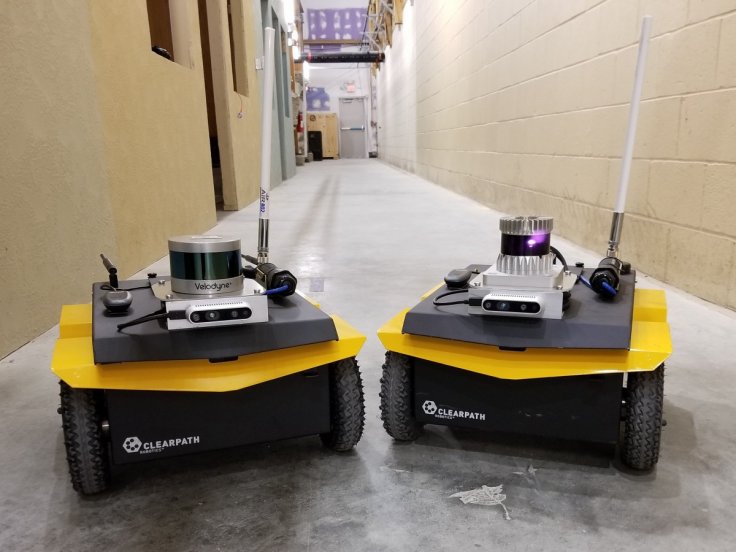The U.S. Army is working to understand to if robots can be paired with soldiers to detect dangers in real time, scientists at the army's research laboratory announced on Monday. They experimented the idea by assigning robots that had light detection and ranging (lidar) sensors to soldiers who wore augmented reality glasses.
In their research, the scientists at the U.S. Army Research Laboratory demonstrated a team of robot and soldier in real time and the robot detected changes in 3D and passed on the information to its human partner via the AR glasses so that the latter could decide on his follow-on action.
"In studying communication between the robot and human team, the researchers tested different resolution lidar sensors on the robot to collect measurements of the environment and detect changes," the Army said. "When those changes were shared using augmented reality to the human, the researchers found that human teammates could interpret changes that even the lower-resolution lidars detected."

The Army also noted that the robot compared its current and previous readings while it moved in the surroundings and detected some changes, which were then displayed in the soldier's AR glasses in real time.
The research was led by Christopher Reardon who said the teaming up of a mobile robot with a soldier would be helpful in finding out camouflaged enemy soldiers or IEDs (improvised explosive devices).
"This research aims to fill gaps by incorporating useful information from robot teammates into the Soldier-worn visual augmentation ecosystem, while simultaneously making the robots better teammates to the soldier," Reardon said.
He also said that the robot-soldier team could be also be combined with mixed-reality systems like augmented-reality goggles for soldiers. However, the Army noted that more research was needed to understand the potential use of a robot-soldier team.
"This will improve the autonomous context understanding and reasoning capabilities of the robotic platform, such as by enabling the robot to learn and predict what types of changes constitute a threat," the U.S. Army said.









